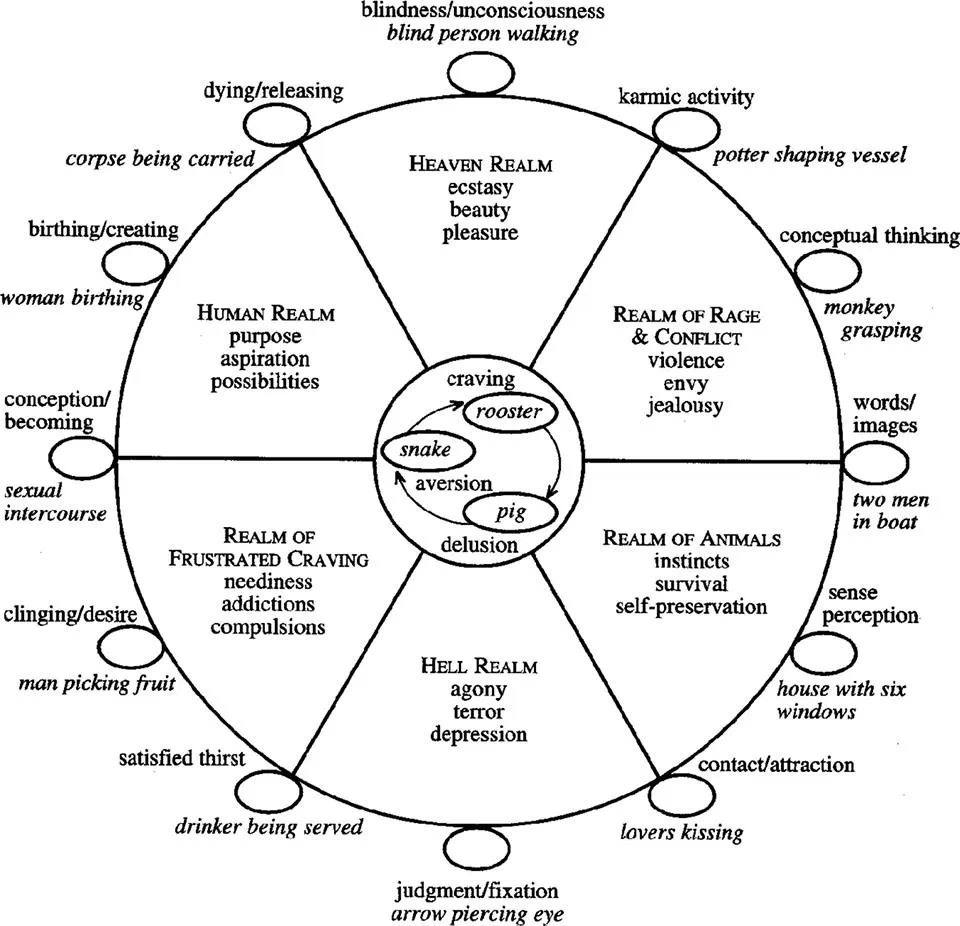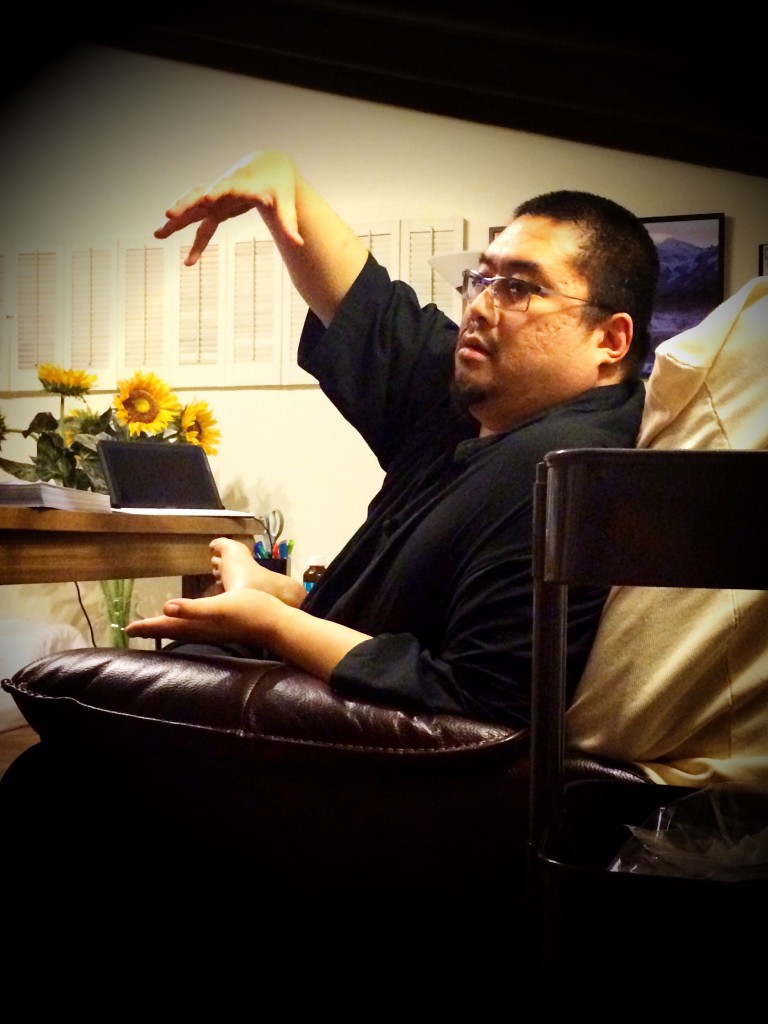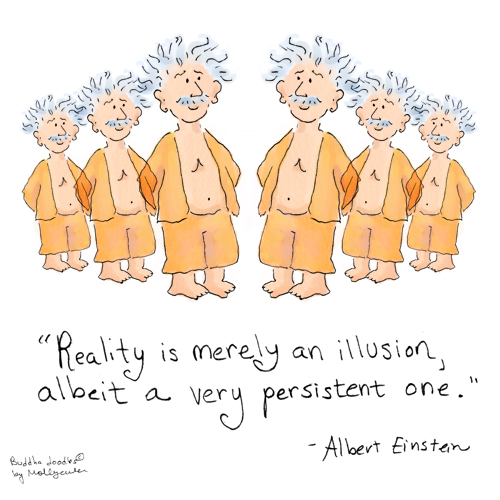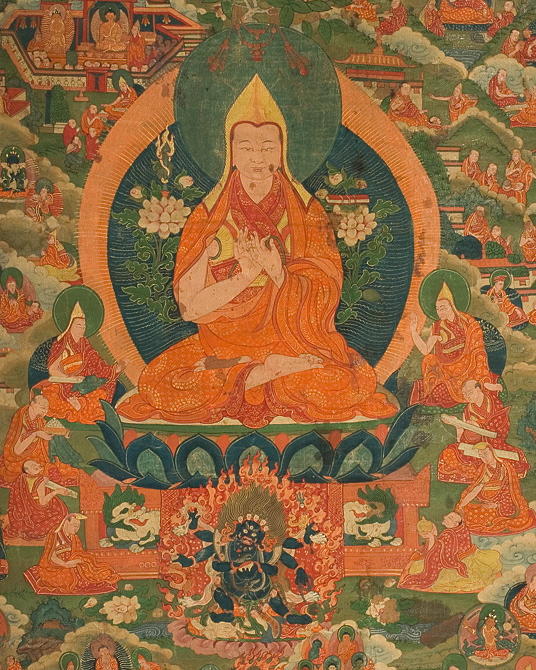Making attachments unnatural
August 12, 2014 5
A few nights ago, Rinpoche gave a profound teaching on the third of the Three Principle Paths, which is emptiness. Using relationships as an example, Rinpoche showed us through logic how chasing after attachments creates our samsara, therefore prolonging our suffering. Rinpoche also showed how clinging on to our attachments will hinder our spiritual progress by concealing the true nature of phenomena, therefore preventing our realisation of emptiness and ultimately, alleviating suffering for ourselves and others.
Why do our attachments lead to our cycle of deaths and rebirths?
Rinpoche used relationships as an example of how people chase after and reinforce their attachments. When we are in a relationship, we show more love, care, help and attention to our partners, over and above everyone else. In some cases, we cherish our partners at the expense of our friendships and families, just to spend time with this one favoured person. Why? Because they make us feel special, safe, loved, cared for, desired, etc. more than anyone else does.
In this way, the relationship is actually a vehicle to what we really want; the real attachment is not to the relationship itself but what the relationship can give us. Relationships therefore reinforce our selfishness because we maintain it to continue receiving what the person can give us; we need the person to give us what we want.

Studying and contemplating on the wheel of life helps us to realise the value of our precious human rebirth, and the dangers of a cyclical one
Rinpoche said that if we really wanted to get into relationships, it should be about what we can do for the other person, and not what the other person can do for us. If we need the person we are with, it’s not a relationship but a prison because we are forced to act in a certain way, even though we would not normally do so. We act in that manner anyway because the short-term consequences are “pleasurable” to us.
This kind of strong desire to experience that pleasure and fulfil our attachment creates strong imprints in our mind, and reinforces our already present negative tendency to chase after our attachments.
Reinforce? Already present? Yes, because our present lifetime is not our first spent chasing after our attachments. In our previous lives, when we strove to fulfil our desire to be in relationships (for example), we created the causes to be reborn into environments whereby we were told our attachment to favour one person is ‘good’ behaviour. This cycle happened so many times, our behaviour of clinging on to and chasing our attachments became natural / habituation.
From the perspective of Western psychology, behaving in a routine manner that is often subconscious is known as habituation. This kind of habituation can be positive or negative. In the case of samsara, we can look at our cyclical rebirth as a series of repeated negative habituations – in each consecutive lifetime, we repeatedly commit negative habits (chasing after attachments) which creates the causes for us to be reborn in the same environment encouraging the same negative behaviour and attitude.
Therefore over countless lifetimes, we have continuously created karma for ourselves to be reborn in environments where we live under the false perception that we need our attachment. How and why this perception is false I will explore later. What we need to know is that in the process of working to fulfil our false perceptions, we create even more negative karma to be reborn in the same situation again, to chase after our attachments to create even more karma to be reborn in the same situation…again and again and again (hence the prolongment of our suffering).
Although Rinpoche used relationships to demonstrate how attachments can prevent us from spiritual progress, attachments do not necessarily have to be with relationships. Attachment can be towards food, money, fame, reputation or power – it is not the object or action that is in question, but our attitude towards the object or action. Therefore, in the same way a person can be attached to relationships because of what they gain from it, a person can be attached to money because of what they gain from it (e.g. power, status, nice cars, big house).
Is this behaviour bad? What’s wrong with having attachments?
More importantly, we should ask – is there hope for us to get rid of this kind of attitude and to end our samsara? In short, yes because although we have negative attitudes, we can also cultivate positive ones to a point where those attitudes become natural to us. Therefore the Dharma is the systematic retraining of our minds to correctly view what is beneficial and what is detrimental to our spiritual progress, and to act accordingly. Using the Dharma, we can break our negative attitudes which result in that tiresome cycle of death and rebirth (samsara).
One positive attitude we can start to develop now is recognising the value of not having attachments, and Rinpoche kindly used himself as an example. Rinpoche said perhaps many lifetimes ago, he was like any other person who is attached to their partners, their wealth, their fame, their reputation. However, perhaps in one of those lifetimes Rinpoche had a particularly nasty break-up with his partner and that led him to meditate on suffering. Perhaps Rinpoche’s meditations in that lifetime planted the seed for him to renounce relationships.

Rinpoche in the midst of illustrating a point
In his subsequent lifetimes therefore, Rinpoche’s meditations created the karmic results of eventually removing of his attachment to seeking relationships. After many lifetimes of retraining his negative attitudes in this way, Rinpoche developed positive ones like the renunciation of his attachments.
In effect, Rinpoche retrained himself to find other things natural in the same way we find our attachments natural. For example, chasing after attachments is not natural to Rinpoche but compassion, helping others and renunciation is.
In contrast, we laypeople spent our previous lifetimes cultivating our negative attitudes. Instead of creating the karmic results to experience renunciation now, we created the karmic results for us to experience more desire, attachment and suffering. Hence in this lifetime, negative habits like chasing after attachments will be natural for us and positive ones will be less natural.
Therefore to end our own samsara, it is about retraining our minds to value different phenomena. We should retrain our minds from one that values negative attitudes to a mind that values positive ones. Once we develop a value for positive attitudes, actions like renunciation no longer have to be a conscious act. Instead, being unattached will come as naturally to us in the same way that being attached currently does.
Why is our perception false? Aren’t our attachments real?
Does that mean we have to break up with our partners now? Rinpoche said actually, we shouldn’t dump our partners or seek to renounce all of our attachments. We have to be realistic and realise that such grand gestures are not sustainable for practitioners like us who have spent many lifetimes reinforcing the false perception that our attachments are real.
Rinpoche explained that in reality, our attachments exist only in our minds and it is our craving for the object that makes it become real. Because of the environment we are born into (as a result of the karmic causes we create in a previous life), we are “nurtured” into thinking our attachments are good and we are encouraged to go towards them.

Understanding that his life in the palace was an illusion, and that any attachment with his wife Yasodhara and his son would hinder his quest to achieve ultimate liberation, Prince Siddhartha left the palace in the middle of the night aided by his trusty charioteer Channa. But not everyone is able to renounce as swiftly and compassionately as Siddhartha, so Rinpoche teaches us a method that is more suitable for our times
When karmic causes prevent us from acquiring those attachments, we suffer. Alternatively, when we have the karma to acquire those attachments, we develop a craving to keep acquiring them because we are told that is right and we should get more of it. When we experience the suffering of non-acquisition, or the pleasure of acquisition, the attachment becomes real to us.
One key phrase in realising how false these attachments are is “to us”. What we value as an attachment is not necessarily what another person will value – not everybody values relationships, food, sex, money, health, etc. in equal measure. If the attachment were inherently precious, shouldn’t the object be equally valued by everybody?
Since the attachment itself is lacking any true inherent value, the “realness” of the attachment is actually non-existent – that is, the attachment is false. What makes it real is our karma, created in previous lifetimes, to lead us to desire the attachment to the point we have to act on it, to make it real.
Another method of evaluating the falsity of our attachments is by looking at the way in which our attachments arise. They arise because we see ourselves as permanent entities – I am Jean Ai, I am Asian, I am female and therefore I like this, and not that. Viewing ourselves as permanent entities is dangerous because one day, the karma for us to exist as we think ourselves to be will run out. Therefore since we are not permanent, our attachments are not permanent also – that is, there is no Jean Ai who exists in the way I think she does, who likes tomatoes and chocolate, and hates celery.
Are our attachments bad?
This won’t be the answer most people want to hear but yes, our attachments are bad for us. As long as we hang on to them, we will continue to reinforce the illusion that what we desire will make us happy, and we will carry this illusion on with us into our future lives when they will continue to cause us suffering.

The “reality” we create from our attachments arising from projected value on to things which do not exist in the way we expect them to exist, causes us a lot of suffering
Rinpoche said he knows it is hard for us to break this attitude of preferring some people or situations over others, which has developed and been reinforced over countless lifetimes. Therefore for those who are serious about their spiritual practice, Rinpoche gave us another method to retrain our minds until renunciation comes naturally to us. Rinpoche said he is not asking us to go cold turkey, and to dump our relationships and become ascetics (although that would be best for us!). Instead, Rinpoche said, we should try and create equilibrium.
Again using relationships as an example, let’s say we have a scale of one to 10. At Level 1, we treat the person with “ignorant indifference” and at Level 10, we crave and will do anything for a specific person’s attention. Rinpoche said instead of cutting off anyone who is at our Level 10 and caring for them less, why not try and treat everyone around us at Level 10? And that makes perfect sense – if you have the capacity to care for someone at Level 10, then it means you have the capacity to show that much care…so why not show that much care to many, many more people?
How does equanimity help us?
We should recognise that the method Rinpoche described will NOT instantly and completely get rid of our attachments. Rinpoche was teaching us how to recognise we do have attachments, and provided us with an alternative, but symptomatic treatment to get rid of them. By us creating equilibrium and being kind to everyone instead of just one person, we practise equanimity consciously. When we practise equanimity consciously, we plant the seeds for us to practise it again in future lifetimes, until it becomes natural.

Lama Tsongkhapa taught the Three Principal Aspects of the Path (renunciation, bodhicitta, and the correct view of emptiness) which Rinpoche transmitted to us here, using relationships as an example and equilibrium as our goal
When practising equanimity becomes natural, we will abide in a state of non-duality, without preferences or attachments. Non-duality is the way in which we view all phenomena equally, regardless of what we stand to gain from it. It is, in fact, the opposite of being attached which is an attitude fuelled by the benefits we derive from maintaining that attachment.
Again we can use relationships as an example of how attachments hinder our realisation of emptiness. When it comes to relationships, Lama Yeshe summarised this by teaching,
Consider your relationship to friends, enemies and strangers. Your craving over-estimation of one person, your hatred of another, and your ignorant indifference to yet another come from your own three poisonous minds of desire, hatred and ignorance.
(Source: http://www.tsemrinpoche.com/tsem-tulku-rinpoche/inspiration-worthy-words/great-excerpt.html)
When we have an attachment, we have a “craving over-estimation” for that person or thing over everyone else. In having this preference, we are actually rejecting equanimity because our preferences create two levels – what we like, and what we like less. Using wealth as another example, when we favour one state over another (rich vs. poor), we deriving this preference to be wealthy by projecting a value on money as a measure of happiness. Rinpoche’s alternative method to renunciation trains us to let go of this preference, until equanimity becomes natural.
In rejecting equanimity, we are also behaving in the exact opposite manner necessary to develop as bodhicitta, a state in which we have equal compassion for all sentient beings. Bodhicitta is one of the other Three Principle Paths necessary to gain enlightenment and ultimately, end to our and other people’s suffering…after all, have you ever known a Buddha to be selective in their compassion?
Thus, Rinpoche effectively said we should fake equanimity until we develop real equanimity. Developing such equanimity (or non-duality) will help us to gain realisation of emptiness – that all phenomena is devoid of an inherent existence / value – without making a conscious effort to try and understand it.
At this juncture, it is important to note the role of guru devotion in our Dharma practice. For many people, we find it hard to be kind to everyone without agenda and selectivity. Focusing on our gurus’ compassion and generating gratitude trains us to be kind to our lamas, to repay their kindness to us. From our lamas, we can then extend this kindness to include people around our teacher and around us, and eventually to people we do not like. In this way, our lama becomes the focal point for us to develop non-duality in how we view others, and our lama trains us to give up our attachments and comforts in order to repay his or her kindness.
Rinpoche ended this most profound Dharma teaching with a request. Rinpoche asked us to put the teachings into practice, saying that “All dharma teachings should be taken as personal advice”. Rinpoche said that if we really wanted to suffer less, we would come away from the teaching not singing praises about its profundity, or viewing it as just another intellectual debate or eloquent speech. In order to for us to experience the benefits of Rinpoche’s teachings, we had to put it into practice.
That practice is our Dharma work. Dharma work challenges our attachments by acting as a constant reminder of non-selectivity – we have to be kind, patient and generous to everyone we come across, because all beings are suffering. For those who view Dharma work as difficult, Rinpoche said that Dharma work is a sacrifice only when we are attached. When we struggle, it means that we are struggling against our attachments. Therefore to commit to Dharma work full-time is really to commit to a full-time battle against our attachments…and having understood how attachments prolong our suffering and hinder our realisation of emptiness, why wouldn’t that be a battle to engage in?
5 Comments → “Making attachments unnatural”
Leave a Reply to Mavis Cancel reply
Recent Posts
Subscribe to Blog
Categories
Archives
Visitors by Country
| Total Pageviews: | 1 |
|---|



Thanks PJA for sharing this insightful knowledge! Now it’s time to incorporate it in our daily lives!
Nice entry! Many fall into the trap of intellectually knowing something but not putting it into practice because it’s much harder to practice than to comprehend. So that’s a great reminder.
On attachment, I think it’s also important that people don’t fall into the trap of using spirituality as the new target of attachment. I’ve seen it in others and also my own tendencies as well.
Everyone is at some level aware of our suffering from life emptiness. It’s the profound discomfort with this emptiness / transience of life that fuels the addiction and reliance on something futilely hope to be ‘concrete’ — thus causing attachment. Doesn’t help that our ego selves are tricky little things, so we always have to maintain awareness.
It’s a tough journey man!
thank you
Thank you Pastor Jean Ai. I really like this teaching very much. The instructions are very clear. The practice will be tough. But Samsara IS TOUGH ! If not now then when ?
This is an amazing writing and teaching. Endless gratitude!